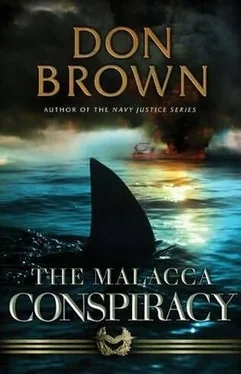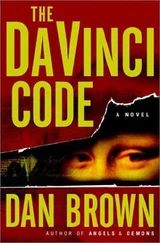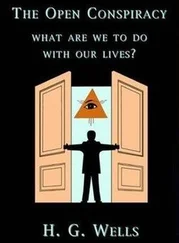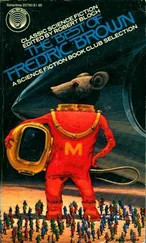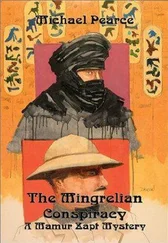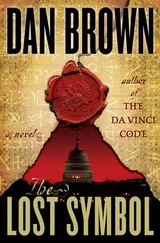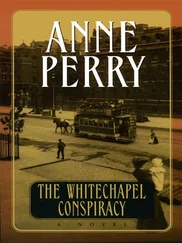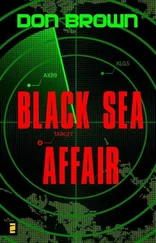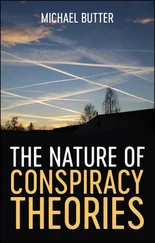Don Brown - The Malacca Conspiracy
Здесь есть возможность читать онлайн «Don Brown - The Malacca Conspiracy» весь текст электронной книги совершенно бесплатно (целиком полную версию без сокращений). В некоторых случаях можно слушать аудио, скачать через торрент в формате fb2 и присутствует краткое содержание. Жанр: Триллер, на английском языке. Описание произведения, (предисловие) а так же отзывы посетителей доступны на портале библиотеки ЛибКат.
- Название:The Malacca Conspiracy
- Автор:
- Жанр:
- Год:неизвестен
- ISBN:нет данных
- Рейтинг книги:5 / 5. Голосов: 1
-
Избранное:Добавить в избранное
- Отзывы:
-
Ваша оценка:
- 100
- 1
- 2
- 3
- 4
- 5
The Malacca Conspiracy: краткое содержание, описание и аннотация
Предлагаем к чтению аннотацию, описание, краткое содержание или предисловие (зависит от того, что написал сам автор книги «The Malacca Conspiracy»). Если вы не нашли необходимую информацию о книге — напишите в комментариях, мы постараемся отыскать её.
The Malacca Conspiracy — читать онлайн бесплатно полную книгу (весь текст) целиком
Ниже представлен текст книги, разбитый по страницам. Система сохранения места последней прочитанной страницы, позволяет с удобством читать онлайн бесплатно книгу «The Malacca Conspiracy», без необходимости каждый раз заново искать на чём Вы остановились. Поставьте закладку, и сможете в любой момент перейти на страницу, на которой закончили чтение.
Интервал:
Закладка:
At 7:00 A.M., he had ridden “across the river” from “the Building”-Washington talk meaning he had left the Pentagon and crossed the Potomac River-with Admiral Jones and the admiral’s aides, armed with a stack of briefing papers.
The door opened.
“Ladies and gentlemen, the president of the United States,” the White House chief of staff announced.
Members of the National Security Council, including the vice president, rose to attention as if they were seamen recruits in boot camp acknowledging a gunnery sergeant.
“Sit,” President Mack Williams ordered. The sound of shuffling chairs followed as the council obeyed the president’s order. “Admiral Jones, what’s going on?”
“Oil futures prices again, Mr. President. Three limit moves last night. Aside from the potential rioting in the streets from rising gasoline prices, our intelligence gurus tell us this move is similar to the period just before the Singapore attacks.”
The president looked at Molster. “That right, Lieutenant?”
This was his cue. He felt for his briefing papers. “Yes, sir, Mr. President.”
“Not much sleep again last night, I take it?”
“No, sir,” Molster said.
“Okay,” the president said, his eyes still on Molster. “And this is the first run-up since the Singapore attacks.”
“Yes, Mr. President.”
“And you think this means they’re getting ready to hit again?”
Again, the president’s blue eyes blazed directly at Molster.
Unreal.
The director of Central Intelligence, national security advisor, the vice president, the secretary of defense, the secretary of state, and the chairman of the Joint Chiefs of Staff were all in the room, and yet the president seemed to be looking to a lowly senior lieutenant in the navy, a mere reservist at that, for an answer to this crucial question pertaining to the national security of the United States.
Molster hesitated for a moment, hoping perhaps against hope that the vice president, the secretary of defense, someone would step up and answer the questions. But the president’s eyes did not waver.
“Well, Lieutenant?”
“Mr. President, the trading patterns are nearly identical to the trading patterns just before the attacks earlier this week. Huge buying. Unprecedented short-term price spikes. Unprecedented volume. Much worse than the price jumps in 2008.”
“And you think this means we’re looking at another strike?”
How should I know? I’m just a junior intelligence officer, and a reservist at that. And I’m not even career navy. You’ve got the Veep, SECDEF, and the chairman of the Joint Chiefs here. Why don’t you ask one of them? Molster wanted to ask, but was not about to.
“Well, there’s a certain degree of speculation involved here.”
“Speculation?” The president slammed his fist on the table, riveting the attention of everyone in the room. “Isn’t the job of the intelligence officer to sift out the differences between speculation and reasonable probability?”
A pause. Why wouldn’t someone else speak up? “Well, Mr. President, you’re right about that. An intelligence officer must sift through the differences between speculation and probability.”
The president nodded.
“So here’s what we know,” Molster continued. “They struck before in the wake of price spikes and volume almost identical to last night’s data. The futures price jumps and volume in the oils futures markets was highly unusual then, and it is highly unusual now.
“Those futures price jumps preceded the attacks on oil tankers that led to a huge run in the real-time price of crude oil, which led to billions in profits by whoever bought the futures.
“Based on that, Mr. President, this is more than just mere speculation. It’s based on data. Limited data, but nevertheless, data. In my judgment, there’s a probability that some sort of strike, somewhere, is imminent, and that strike will lead to another price run.”
More silence. Nervous glances were exchanged among the members of the NSC.
“Thank you, Lieutenant,” the president said. “That took some guts, I know, for a junior officer to stick his neck out in a setting like this.”
Molster exhaled.
“Don’t worry. I’m not going to chop off your neck if you’re wrong.”
“Thank you, sir.”
“All right,” the president said, speaking with an aura of command. “We’ve got oil futures shooting through the roof, we’ve got Singapore flooded in a tar pit that makes Prince William Sound look like a minor coffee spill at McDonald’s, and we’ve got Lieutenant Molster here saying they’re probably gonna strike again.
“Now that the lieutenant has stuck himself out there, I need some of you high-ranking, higher-paid members of the government to do the same.” The president stood, took off his jacket, and handed it to an aide. “I need to know where they’re going to strike”-he began rolling up his shirtsleeves-“and when.”
President Williams leaned over the table, resting his palms out flat in front of him. His eyes shifted from left to right. Now he was looking for answers from the members of his National Security Council. Good. At least Molster was off the hook. For now.
“Mr. President.” Admiral Jones spoke up.
“Yes, Admiral.”
“It’s a big world out there, sir. But first, we look to the sea lanes where oil is transported. We narrow that down even more, and I think we must watch strategic choke points where oil is transported.”
“You mean like the Strait of Malacca?”
“There are eight strategic naval choke points around the world, including Malacca. Right now I mean the Strait of Hormuz, Bab-el-Mandeb, the Suez Canal, the Bosporus, Gibraltar, Cape Horn, and the Cape of Good Hope. Tankers pass through all these choke points and are vulnerable to attack. I think we can take the Malacca Strait off the list as a potential attack area for a while.”
“Why is that, Admiral Jones? We just got hit there.”
“Sir”-the admiral wiped his hand across his forehead-“I regret to inform you that as of this morning, approximately zero-four-hundred Eastern Time, the Malacca Strait has been closed to shipping because of the thick oil slick at Singapore. The whole Singapore Strait is covered from Singapore to Indonesia. There won’t be any tanker traffic going that way for a while.”
“Darn it!” The president slammed his fist on the table again. “Then what do we guard?”
“Sir, the traffic that cut through the Malacca Strait we now believe will sail southeast across the Indian Ocean, and then cut through the seas south of Indonesia and north of Australia. In fact, we’ve already seen tankers beginning to move along this route. We’ve prepared a visual to demonstrate this new sea route for you, sir.”
“Very well, let’s see it,” the president said.
“Commander Murray?” Admiral Jones nodded to Lieutenant Commander Beth Murray. Instantly, the graphic appeared on the monitor for all to see.
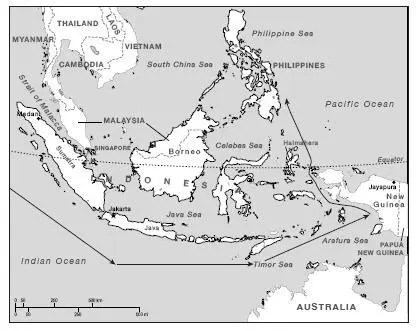
“Here’s the graphic, Mr. President,” Admiral Jones said. “You can see the sea routes running to the southwest of Jakarta. Then, approximately four hundred miles due south of Jakarta, they are breaking due east, where they sail into the Timor Sea, then cut to the northeast through the Arafura Sea, then northwest, hugging the coast of the island of New Guinea, then sailing east of Halmahera, running through the Raja Ampat Islands, and finally heading north toward the Philippines.”
The president donned a pair of black, plastic-rimmed reading glasses and studied the sea routes. “Boy, they’re going around their elbow to get to their thumb.”
Читать дальшеИнтервал:
Закладка:
Похожие книги на «The Malacca Conspiracy»
Представляем Вашему вниманию похожие книги на «The Malacca Conspiracy» списком для выбора. Мы отобрали схожую по названию и смыслу литературу в надежде предоставить читателям больше вариантов отыскать новые, интересные, ещё непрочитанные произведения.
Обсуждение, отзывы о книге «The Malacca Conspiracy» и просто собственные мнения читателей. Оставьте ваши комментарии, напишите, что Вы думаете о произведении, его смысле или главных героях. Укажите что конкретно понравилось, а что нет, и почему Вы так считаете.
